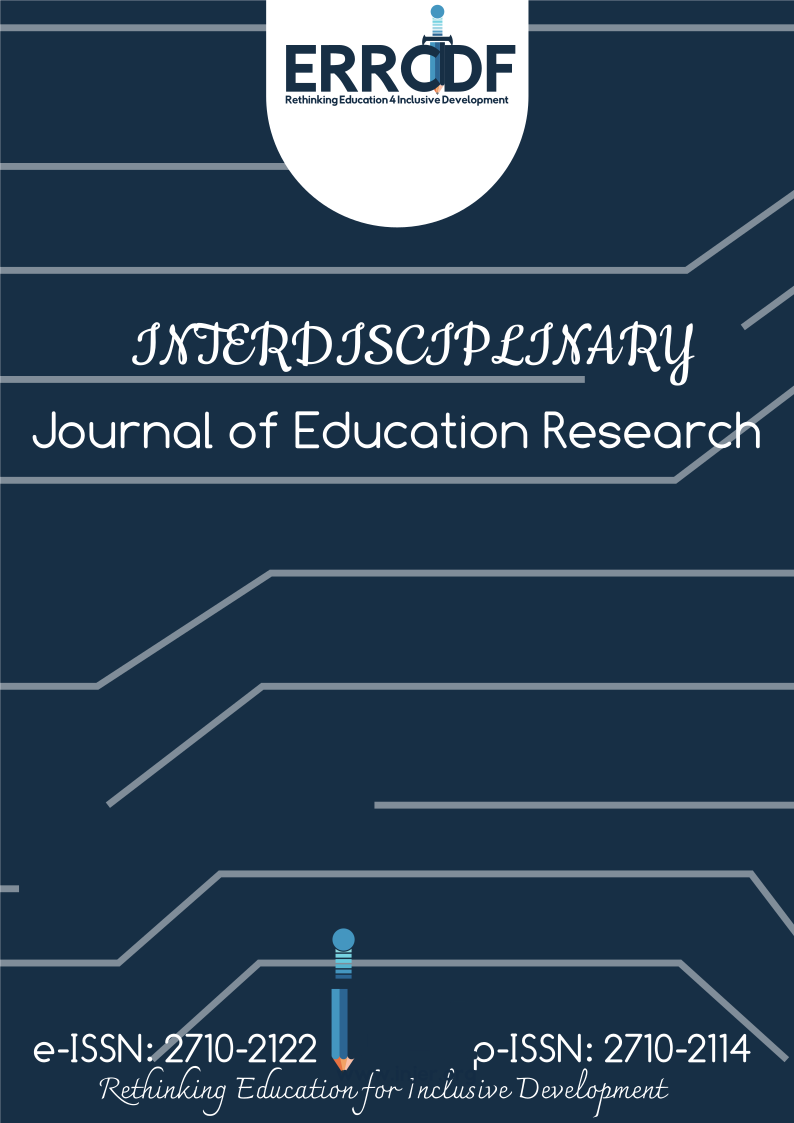Exploring the intersection of vulnerability and resilience in the educational experience of left-behind learners at a South African school
DOI:
https://doi.org/10.38140/ijer-2025.vol7.s1.07Keywords:
Vulnerability, resilience, left-behind learners, learning, learner well-beingAbstract
The purpose of this paper is to explore the nexus between vulnerability and resilience among left-behind learners following parental labour migration. This qualitative study provided those learners left behind by migrant parents with a platform to articulate their lived experiences in relation to vulnerability. The left-behind narrative is significant as it informs psychosocial support schemes aimed at improving the well-being and educational outcomes of these learners. A case study design was adopted, and eight left-behind learners were purposively sampled from a rural secondary school in South Africa. The study utilised Masten’s resilience developmental model and Ncube’s tree of life model to build a conceptual framework. Findings reveal that left-behind learners feel abandoned by their migrating parent(s) and marginalised from mainstream support. This occurs because they are perceived to have living parents, and those who could offer support assume that the migrating parent is responsible. Left-behind learners, particularly girls, felt exposed to physical and emotional abuse due to a lack of parental protection and guidance at home. This, in turn, affects their mental health and educational outcomes. However, through peer support and school-based assistance, some of the learners have developed ways to tolerate and absorb the challenges associated with parental absence. External support also helps to complement hope, bravery, and optimism, enhancing the competencies of left-behind learners over time. The study recommends building support from the community, church, and school for sustainable learner support and resilience.
References
Abebe, T., & Kjørholt, A. T. (2009). Social relations of children’s rights. Journal of International Child and Youth Care, 3(1), 1–14.
Cohen, L., Manion, L., & Morrison, K. (2011). Research methods in education (7th ed.). Routledge.
Faldet, A., & Nes, K. (2021). Valuing vulnerable children’s voices in educational research. International Journal of Inclusive Education, 28(5), 657–672. https://doi.org/10.1080/13603116.2021.1956602
Graham, E., & Yeoh, B. S. A. (2013). Childcare and international mobility: Exploring the care chains of Filipino migrant families. Journal of Intergenerational Relationships, 11(2), 148–164.
Guo, L. (2012). Migration and the well-being of left-behind children in China (Publication No. 3518148) [Doctoral thesis, State University of New York at Albany]. ProQuest Dissertations & Theses.
Hage, L., & Pillay, J. (2017). Gendered experiences of African male learners in child and youth headed households: Implications for the role of psychologists. South African Journal of Psychology, 47(3), 305–315. https://doi.org/10.1177/0081246316685073
Hall, K. (2024). South African early childhood review 2024. Children’s Institute University of Cape Town and Ilifa Labantwana. https://ilifalabantwana.co.za/wp-content/uploads/2024/07/SA-early-childhood-review-2024-FINAL.pdf
Hall, K., & Sambu, W. (2017). Demography of South Africa. Child Gauge, 1, 216–220.
Hall, K., & Posel, D. (2019). Fragmenting the family? The complexity of household migration strategies in post-apartheid South Africa.IZA Journal of Development and Migration,10(2), 1–20. https://doi.org/10.2478/izajodm-2019-0004
Jaure, R., & Makura, A. H. (2021). Child learners of parents in employment sojourn: Their lived experiences in separation. Journal of Psychology in Africa, 31(1), 82–86. https://doi.org/10.1080/14330237.2020.1871232
Jaure, R., & Gregory, A. (2022). Exploring asset-based support for learners left in Zimbabwean child-headed households in the context of parental migration. African Journal of Social Work, 12(1), 21–30. https://www.ajol.info/index.php/ajsw/article/view/224733
Maringe, F., & Sing, N. (2014). Theorising research with vulnerable people in higher education: Ethical and methodological challenges. South African Journal of Higher Education, 28(2), 533–549. https://hdl.handle.net/10520/EJC153542
Masten, A. S. (2021). Resilience of children in disasters: A multisystem perspective. International Journal of Psychology, 56(1), 1–11. https://doi.org/10.1002/ijop.12737
Masten, A. S. (2018). Resilience theory and research on children and families: Past, present, and promise. Journal of Family Theory & Review, 10(1), 12–31. https://doi.org/10.1111/jftr.12255
Masten, A. S. (2014). Global perspectives on resilience in children and youth. Child Development, 85(1), 6–20. https://doi.org/10.1111/cdev.12205
Masten, A. S. (2014). Ordinary magic: Resilience in development. Guilford Press.
Masten, A. S., Lucke, C. M., Nelson, K. M., & Stallworthy, I. C. (2021). Resilience in development and psychopathology: Multisystem perspectives. Annual Review of Clinical Psychology, 17(1), 521–549. https://doi.org/10.1146/annurev-clinpsy-081219-120307
Masten, A. S., & Obradovi?, J. (2006). Competence and resilience in development. Annals of the New York Academy of Sciences,1094(1), 13–27. https://doi.org/10.1196/annals.1376.003
McAllister, M., & Brien, D. L. (2020). Resilience in nursing. In M. McAllister & D. L. Brien (Eds.), Empowerment strategies for nurses: Developing resilience in practice (2nd ed., pp. 1–28). Springer Publishing Company.
Messiou, K. (2019). The missing voices: Students as a catalyst for promoting inclusive education. International Journal of Inclusive Education, 23(7–8), 768–781. https://doi.org/10.1080/13603116.2019.1623326
Morrow, V.(1998). If you were a teacher, it would be harder to talk to you: Reflections on qualitative research with children in school. International Journal of Social Research Methodology, 1(4), 297–313. https://doi.org/10.1080/13645579.1998
Mund, M., & Neyer, F. J. (2019). Loneliness effects on personality. International Journal of Behavioral Development, 43(2), 136–146. https://doi.org/10.1177/0165025418800224
Ncube, N. (2006). The Tree of Life Project: Using narrative ideas in work with vulnerable children in Southern Africa. The International Journal of Narrative Therapy and Community Work, 2006(1), 3–16. https://search.informit.org/doi/epdf/10.3316/informit.197106237773394
Seepamore, B. K. (2016). Distance parenting: Implications for social work practice. Social Work/Maatskaplike Werk, 52(4), 571–588. https://doi.org/10.15270/52-2-531
Sitienei, E. C., & Pillay, J. (2019). Psycho-educational and social interventions provided for orphans and vulnerable children at a community-based organisation in Soweto, South Africa. African Journal of AIDS Research, 18(1), 1-8. https://doi.org/10.2989/16085906.2018.1548359
Tong, L., Yan, Q., & Kawachi, I. (2019). The factors associated with being left-behind children in China: Multilevel analysis with nationally representative data. PLoS ONE, 14(11), 1-18. https://doi.org/10.1371/journal.pone.0224205
Ungar, M., Connelly, G., Liebenberg, L., & Theron, L. (2019). How schools enhance the development of young people’s resilience. Social Indicators Research, 145(2), 615–627. https://doi.org/10.1007/s11205-017-1728-8
UNICEF. (2020). Struggles of children left behind by migration at the time of COVID-19: Migration, children and COVID-19. https://www.unicef.org/kyrgyzstan/press-releases/unicef-statement-remote-learning-time-covid-19
Weichselgartner, J. (2001). Disaster mitigation: The concept of vulnerability revisited. Disaster Prevention and Management, 10(2), 85–95. https://doi.org/10.1108/09653560110388609
Youlu, S. (2017). “Migrating” or being “left behind”: The education dilemma of rural children in mainland China. Chinese Education & Society, 50(3), 217–244.
Downloads
Published
How to Cite
Issue
Section
License
Copyright (c) 2025 Ricanos Jaure, Alfred Henry Makura

This work is licensed under a Creative Commons Attribution 4.0 International License.










